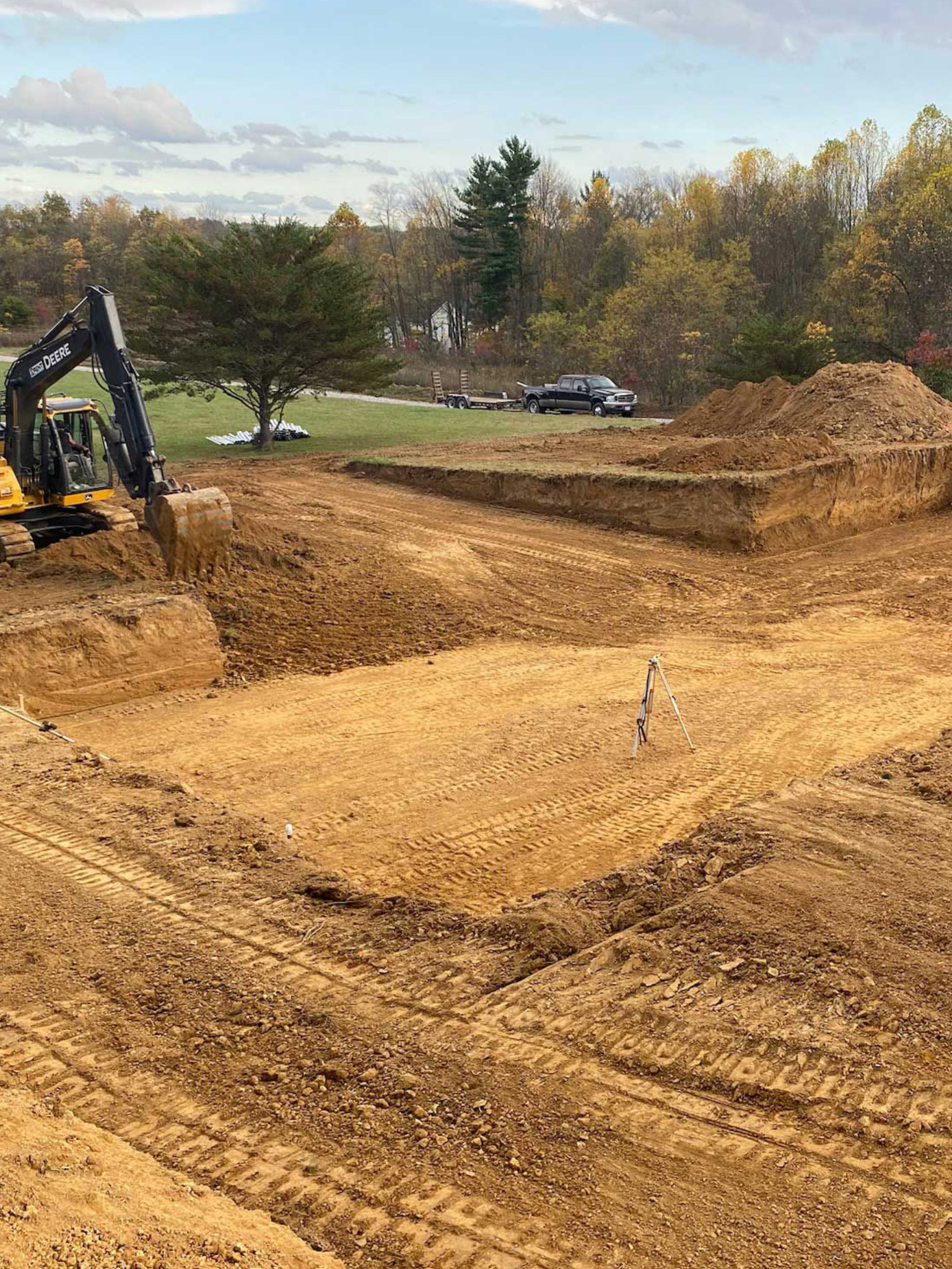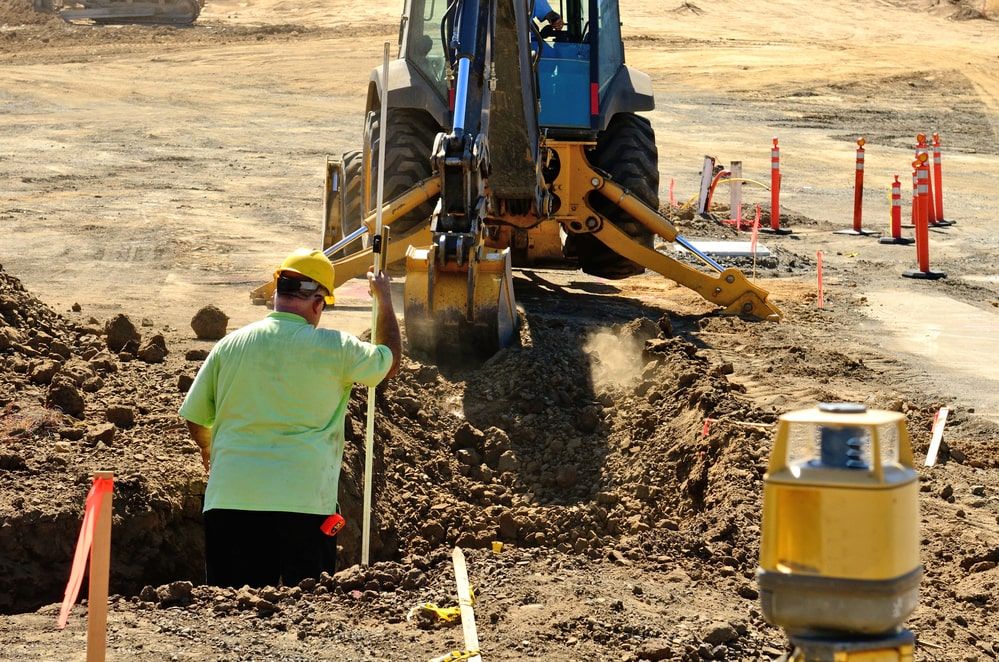Excavating Ohio - Top Excavation Specialists for Ohio Projects
Unveiling the Art of Excavation: Pro Tips for Safe and Effective Excavating
As dirt is transformed and planet is moved, the ins and outs of excavation reveal themselves, requiring an eager understanding of devices, dirt structure, safety and security methods, and ecological factors to consider. The proficiency needed to navigate these components efficiently can suggest the difference in between an effective excavation project and a potential catastrophe.
Significance of Proper Equipment
To guarantee the safety and performance of any excavation job, utilizing the ideal equipment is critical. The right tools not only boost productivity yet additionally mitigate risks related to digging. Excavation tasks differ in extent and intricacy, varying from tiny residential landscape design work to massive construction endeavors. No matter the project size, having the right equipment can make a significant difference in the end result.
These versatile equipments come in various sizes to suit various task needs. Miniature excavators are ideal for smaller tasks, while bigger excavators take on more comprehensive jobs effectively.
In addition to excavators, various other crucial devices includes dump vehicles, excavators, and plates. Unload trucks are important for getting rid of and transporting excavated products, while trenchers are utilized for excavating narrow and deep trenches. Bulldozers master tasks that need pushing big quantities of dirt or debris. By spending in the suitable tools, excavation projects can be finished safely, promptly, and with precision.
Recognizing Dirt Make-up
A comprehensive grasp of dirt make-up is essential for implementing excavation jobs with accuracy and safety. Comprehending the various kinds of dirt is vital as it directly impacts excavation techniques, devices option, and overall task efficiency. Dirt structure typically consists of four primary parts: sand, silt, clay, and raw material. Each component has unique residential or commercial properties that affect just how soil reacts to excavation processes.
Sand fragments are the biggest and give good drainage however provide little cohesion. Silt particles are smaller sized than sand yet bigger than clay, using moderate drainage and cohesion. Clay fragments are the tiniest and supply high cohesion however poor drainage. Organic issue, such as decomposing plant product, affects dirt fertility and security.
Before starting excavation, carrying out soil examinations to establish its structure and qualities is necessary. This info helps in picking the ideal devices, executing precaution, and developing excavation techniques tailored to the particular dirt problems - lancaster excavation. By understanding soil structure, excavation experts can improve job results while making certain safety and adherence to finest practices
Precaution and Methods
Recognizing soil make-up is the cornerstone whereupon safety procedures and protocols for excavation jobs are built, making sure the well-being of workers and the success of the undertaking. There are a number of vital steps that need to be applied to mitigate dangers and protect against accidents. when it comes to safety during excavation.
Firstly, prior to any digging begins, a comprehensive examination of the website should be carried out to determine any kind of potential go to the website hazards such as underground utilities, unstable soil conditions, or close-by frameworks that can position a threat. It is vital to have a skilled individual look after the excavation procedure to guarantee that all security methods are followed purely.
Additionally, all workers included in the excavation has to be appropriately learnt secure digging techniques and the proper procedure of equipment. Personal safety devices (PPE) such as construction hats, high visibility apparel, gloves, and security boots ought to be used in any way times to reduce the threat of injuries. dump truck companies in ohio. Regular security conferences and tool kit talks need to additionally be carried out to maintain all employees notified regarding possible dangers and strengthen safe job techniques. By sticking to these safety and security measures and methods, excavation jobs can be completed effectively and without case.
Efficient Excavation Preparation
When starting an excavation project, meticulous preparation is vital to ensure performance, safety, and successful outcomes. Reliable excavation planning involves numerous crucial steps that are crucial for the smooth implementation of the job. The primary step is to carry out a detailed site assessment to recognize any type of potential dangers, such as underground energies or unsteady dirt conditions. This information is crucial for establishing a detailed excavation strategy that includes safety actions and take the chance of reduction strategies.
Once the website analysis is complete, the next action is to produce a clear timeline and schedule for the excavation tasks. This includes figuring out the sequence of tasks, tools demands, and manpower allowance. Correct organizing helps avoid hold-ups and ensures that the job stays on track.

Moreover, communication among all staff member is critical during the planning phase. Clear directives, regular updates, and efficient sychronisation are vital for an effective excavation task. By spending time and initiative in careful preparation, excavation groups can substantially improve efficiency, lessen dangers, and attain effective end results.
Taking Care Of Environmental Factors To Consider
With boosting emphasis on ecological sustainability in building practices, taking care of environmental factors to consider has actually become a vital facet of excavation projects. Excavation this page tasks have the prospective to impact the surrounding atmosphere through dirt erosion, sediment drainage, habitat disturbance, and contamination of water resources. To mitigate these threats, it is necessary to execute best methods that prioritize environmental management.

Moreover, correct waste management is essential to avoid soil and water contamination. Applying treatments for the disposal of hazardous products, recycling of waste materials, and decreasing using unsafe chemicals can significantly reduce the environmental influence of excavation tasks. By incorporating these methods into excavation planning and implementation, construction firms can make certain that their tasks are not only safe and productive yet additionally ecologically accountable.
Conclusion
To conclude, understanding the art of excavation needs a complete understanding of appropriate equipment, dirt make-up, security steps, and reliable planning. By adhering to these guidelines and considering ecological elements, excavations can be conducted securely and effectively. It is crucial to focus on security and performance in every digging project to make sure successful end results.
As soil is transformed and earth is relocated, the ins and outs of excavation reveal themselves, requiring an eager understanding of equipment, dirt composition, safety and security procedures, and ecological factors to consider.To make certain the security and effectiveness of any type of excavation task, using the appropriate devices is paramount.A detailed grasp of dirt make-up is essential for implementing excavation jobs with accuracy and safety. Recognizing the different types of dirt is crucial as it straight influences excavation methods, tools selection, and general task efficiency. By comprehending dirt composition, excavation experts can boost job end results while guaranteeing security and adherence to ideal techniques.